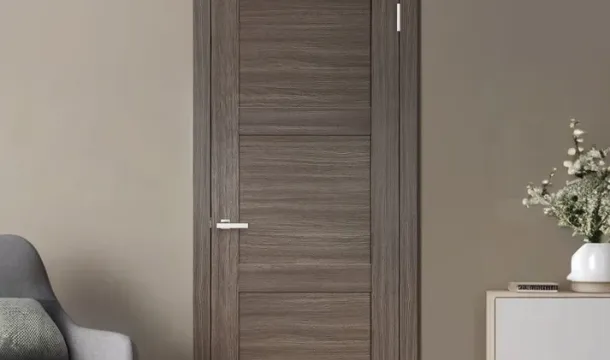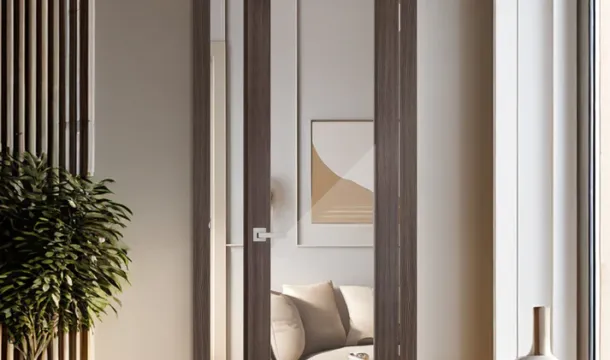The Challenges of Painting Interior Doors
Popular Articles
Painting interior doors can seem like a simple task, but in reality, it presents a number of challenges that can affect both the aesthetics and longevity of your doors. From proper preparation and selecting the right tools to mastering painting techniques and deciding when to hire a professional, there’s a lot more to painting doors than meets the eye. This guide will walk you through these complexities, helping you achieve a professional finish that complements your home’s style.
1. Preparing Interior Doors for Painting
Before you even think about picking up a brush, preparation is crucial for a flawless paint job. A properly prepped surface ensures that the paint adheres well and provides a smooth, long-lasting finish. Skipping or rushing through this phase often leads to peeling paint, rough surfaces, and unsatisfactory results.
The first step is to remove any old paint, especially if it’s chipping or uneven. Depending on the condition of the door, you may need to use a paint stripper or sandpaper to create a smooth base. Sanding the surface lightly ensures that new paint sticks better, giving it an even texture. Don’t forget to clean the door thoroughly to remove dust, oils, or debris that could interfere with adhesion. In Canadian homes, where temperature fluctuations can cause materials to expand and contract, ensuring a clean, well-prepared surface is key to preventing future cracking or peeling.
Neglecting these preparatory steps can result in a poor finish that diminishes the look and durability of the door, making it essential to take the time to prepare properly.
2. Choosing the Right Paint and Tools
Selecting the right paint for your interior doors is another critical decision that can significantly affect the outcome. For Canadian homes, where doors need to endure temperature changes, it’s essential to pick a paint that offers both durability and aesthetic appeal.
The two most common types of paint for doors are oil-based and latex. Oil-based paints provide a smooth finish and are durable, but they can take longer to dry and emit stronger odors. Latex paints, on the other hand, are easier to work with, dry faster, and are easier to clean up, making them a popular choice for interior doors. The finish you choose also matters. Satin and semi-gloss finishes are often recommended for interior doors as they offer a balance of durability and ease of cleaning, making them ideal for high-traffic areas.
Equally important are the tools you use. High-quality brushes and rollers ensure that the paint goes on evenly and smoothly. Painter’s tape is essential to protect areas around the door, such as hinges or handles, and ensures sharp lines between surfaces. Investing in the right tools can make a significant difference in achieving a professional look, even if you’re handling the project yourself.
3. Painting Techniques for Long-lasting Results
Even with the right tools and paint, applying the paint correctly is what will give your doors a smooth, professional finish. This step can be more challenging than it seems, especially if you're painting panel doors or intricate designs.
Start by applying thin coats of paint rather than trying to cover everything in one heavy coat. Thick layers tend to cause drips and uneven textures, which are difficult to correct once they dry. For doors with panels or intricate designs, use a small brush to reach into corners and edges before switching to a roller for flat surfaces. This ensures that the paint is evenly distributed across the entire surface.
It’s also important to consider the climate when painting in Canada. Temperature and humidity levels affect how the paint dries. Avoid painting on very cold or humid days, as this can result in uneven drying or cracked paint. Ideally, you should paint in a controlled indoor environment where you can manage the temperature to ensure optimal drying conditions.
Following these techniques will help you achieve a smooth, even finish that lasts for years, even under the wear and tear of daily use.
4. Time, Effort, and When to Hire a Professional
While DIY painting projects can be rewarding, painting interior doors is often more time-consuming and labor-intensive than expected. A single door can take several hours to prep, paint, and allow sufficient drying time between coats. Multiply that by several doors, and it becomes a significant commitment.
Common mistakes such as drips, uneven color, or improper surface preparation can require rework, costing both time and additional materials. For homeowners with limited experience or large projects, the effort may outweigh the savings of doing it yourself.
This is when hiring a professional can be a smart decision. A professional painter brings expertise in achieving a flawless finish, especially for large homes with multiple doors or more intricate styles like panel or French doors. Professionals can also ensure that the job is done quickly and efficiently, saving you the hassle of dealing with unexpected challenges or mistakes.
Investing in professional services may cost more upfront, but it can save you time, effort, and potentially costly fixes down the road. For many Canadian homeowners, especially those looking for a high-end finish, professional painting is the best option.
Painting interior doors can be a complex task, requiring careful preparation, the right materials, and solid painting techniques. While some homeowners may be tempted to tackle the job themselves, understanding the potential challenges is essential for achieving a high-quality result. From sanding and selecting the right paint to mastering the application process and deciding when to bring in a professional, each step plays a crucial role in the final outcome.
If you’re considering repainting your interior doors, be sure to weigh the time and effort involved against the benefits of a professional finish. In the end, a well-painted door adds significant value to your home, enhancing both its aesthetic appeal and functionality.
Popular Articles

Soundproofing Interior Doors: Which Options Are Best for Your Home?

Choosing the Perfect Interior Doors for Your Canadian Home
